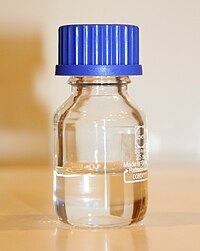
Photo from wikipedia
Recently, we introduced the first example of chiral-at-iron catalysts in which two achiral N-(2-pyridyl)-substituted N-heterocyclic carbene (NHC) ligands in addition to two labile acetonitriles are coordinated around a central iron,… Click to show full abstract
Recently, we introduced the first example of chiral-at-iron catalysts in which two achiral N-(2-pyridyl)-substituted N-heterocyclic carbene (NHC) ligands in addition to two labile acetonitriles are coordinated around a central iron, to generate a stereogenic metal center [HongY.Chiral-at-Iron Catalyst: Expanding the Chemical Space for Asymmetric Earth-Abundant Metal Catalysis. J. Am. Chem. Soc.2019, 141, 4569−457230839201]. A more facile synthesis of such chiral-at-iron catalysts was developed, which omits the use of expensive silver salts and an elaborate electrochemical setup. Configurational robustness was improved by replacing the imidazol-2-ylidene carbene moieties with benzimidazol-2-ylidenes. The π-acceptor properties of the altered NHCs were investigated by Ganter’s 77Se NMR method. The obtained benzimidazol-2-ylidene chiral-at-iron complex is an excellent catalyst for an asymmetric hetero-Diels–Alder reaction under open-flask conditions.
Journal Title: Organometallics
Year Published: 2022
Link to full text (if available)
Share on Social Media: Sign Up to like & get
recommendations!